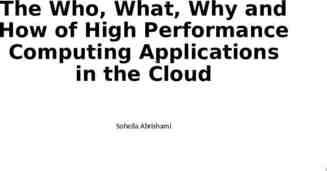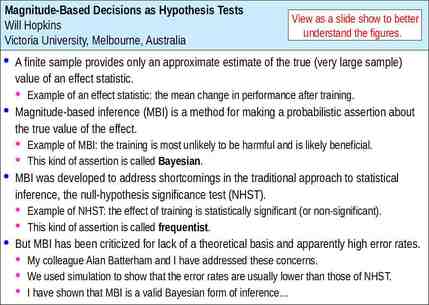IoT Fundamentals & Digital Transformation Emerging Technologies
20 Slides3.50 MB

IoT Fundamentals & Digital Transformation Emerging Technologies Curriculum Dler Z. Mawlod Cisco Academy Support Center Advisor February 27, 2018

Digital Transformation Education Perfect Storm Massive Youth Unemployment Growing Skills Shortage Unprecedented Opportunity 74M 63% 11.1T Unemployed Youth of CEOs see lack of skills as a serious concern M cKinsey Center for Government, Education to Employment PWC, 17 th Annual Global CEO Survey Economic Value Add by 2025 M c Kinsey Global Institute; IoT: Mapping 2017 Cisco and/or its affiliates. All rights reserved. Cisco Confidential the Value Beyond the Hype 3

Digital Technology Impact Everything becomes connected Everything becomes software-based Everything generates data Everything can be automated Everything needs to be secured 2017 Cisco and/or its affiliates. All rights reserved. Cisco Confidential 4

Digital Transformation Connections Internet traffic will be 92 times greater than in 2020 than 2005 26.3 billion networked devices and connections Software Based “Shift to Cloud” will affect 1 Trillion in spending by 2020 Data Volume More data created in past two years than entire previous history of the human race. Automation Only about 0.5 percent of data is currently ever analyzed. AI bots will power 85% of customer service interactions by 2020 Security Global spending on cybersecurity predicted to exceed 1 trillion over the next five years Source: Global Center for Digital Business Transformation, 2015 2017 Cisco and/or its affiliates. All rights reserved. Cisco Confidential 5

Digital Transformation across Countries and Companies IoT merges physical and virtual worlds, creating smart environments Smart City Smart Hospital Smart Highway Digitization change the sector in the: User Experience with Digital Products Processes and Value Chain Business Model Smart Factory 2017 Cisco and/or its affiliates. All rights reserved. Cisco Confidential 7

IoT Fundamentals Curriculum Overview Career Prep IoT Fundamentals is a multidisciplinary, hands-on, curriculum teaching how to ideate, prototype and articulate the business value of an “end-to-end IoT Solution”. The curriculum provides a strong skills and design-thinking foundation for IoT job families that exist today and in the future. The skills developed in the curriculum is the starting point to prepare for employer-validated entry-level job families like: IoT Device Management IoT Product Manager IoT Data Analytics Learning Components Connecting Things course Big Data & Analytics course Hackathon Playbook course Cisco Prototyping Lab Cisco Packet Tracer (PT 7) Features Develop entrepreneurial and social impact mindset through highly engaging hands-on and simulated learning activities including Prototyping Lab and Packet Tracer 7.0 to develop: 21st Century Skills such as Creativity, Critical thinking, Collaboration and Communication Rapid prototyping with Sensors, Electronics and Arduino Use visual programming or Python to program a Raspberry Pi Connect with Cloud Services using RESTful APIs Collect, store and visualize data from sensors in real time Apply analytics to gain insights from data Present IoT solutions and their business value 2017 Cisco and/or its affiliates. All rights reserved. Cisco Confidential 8

IoT Fundamentals: Connecting Things Course Overview In Connecting Things, students learn how to securely interconnect sensors, actuators, microcontrollers, single-board computers, and cloud services over IP networks to create an end-to-end IoT system. Benefits Students will develop the interdisciplinary skillsets required to prototype an IoT solution for a specific business case with a strong focus on the security considerations for emerging technologies. Features Learning Components Understand and explain the concepts, opportunities and challenges of digital transformation using IoT. Understand the relevant aspects of cybersecurity and privacy for an IoT solution. Understand how digitalization Interconnect sensors/actuators, is changing vertical markets such microcontrollers (Arduino), Single as manufacturing, energy, and Board Computers (Raspberry Pi) smart cars. and cloud services (Cisco Spark Use simulation tools (Packet restful API) to create an end-toTracer) to create end-to-end end IoT system. IoT system. Target Audience: Secondary, Vocational, 2-year and 4-year College, 4-Year University students Prerequisites: Basic programming, networking and electronics Languages: English Course Delivery: Instructor-led Estimated Time to Complete: 40-50 hours Recommended Next Course: IoT Fundamentals: Big Data & Analytics or Hackathon Playbook 2017 Cisco and/or its affiliates. All rights reserved. Cisco Confidential 10 Instructor Training: Required

Connecting Things Course Outline Chapter 1 Chapter Titles Things and Connections Summary Description Understand the building blocks, the interconnections and the information flow of an IoT System. 2 Sensors, Actuators and microcontrollers Use sensors and an Arduino microcontroller to read data from physical world and control actuators. 3 Software is Everywhere Use Python to program a Single Board Computer (Raspberry PI) to perform more complex embedded program. 4 Fog Networks and Cloud Services Learn the principal IoT Networking Protocols. Learn how an IoT system distributes computing between Fog and Cloud networks. Learn how to interconnect systems using Restful APIs. 5 Industrial IoT Applications Learn how IoT technologies are applied in diverse vertical markets: Healthcare, Smart Cities, Smart Grid, Manufacturing. 6 Create an IoT Solution End-to-End case study on how to create an IoT Prototype. 2017 Cisco and/or its affiliates. All rights reserved. Cisco Confidential 28

IoT Fundamentals: Big Data & Analytics Course Overview Students will learn how to use Python data libraries to create a pipeline to acquire, transform and visualize data collected from IoT sensors and machines. Benefits The transformative element of any IoT system is the data that can be collected from it. Thus the ability to extract data and using data analytics techniques to gain insights increases employability. Learning Components Explain the fundamental Use Python to read data from sensors and store data in a SQL principles of a modern scalable data base. Big Data platforms like Hadoop. Use Python Data Analysis library Use storytelling to present the to clean, manipulate, integrate insights gained from extracted data sets. data. Use Python Visualization Libraries to visualize real-time data end explore acquired data sets. Features Target Audience: Secondary, Vocational, 2-year and 4-year College, 4-Year University students Prerequisites: IoT Fundamentals: Connecting Things Languages: English Course Delivery: Instructor-led Estimated Time to Complete: 40-50 hours Recommended Next Course: IoT Fundamentals: Hackathon Playbook Instructor Training: 2017 Cisco and/or Required its affiliates. All rights reserved. Cisco Confidential 12

Big Data & Analytics Course Outline Chapter Big Data & Analytics Summary Description 1 Data and the Internet of Things Understand the concepts of Big Data and Analytics, and the role of Big Data in IoT systems. 2 Fundamentals of Data Analysis Learn the basics of descriptive statistics, the practical aspects in acquiring data from a sensor and how to create visual representations of the data. 3 Data Analysis Explore data using visualization to extract information and create hypotheses. 4 Introduction to Machine Learning Learn about predictive analytics, the supervised and unsupervised approaches to machine learning and how to apply models to make predictions from the data. 5 Storytelling with Data Learn how to transform analytics results into a clear and convincing narrative and visual communication. 6 Architecture for Big Data and Data Engineering Learn the basic principles behind the most important scalable solutions for Big Data such as Apache Hadoop and the related ecosystem of technologies. 2017 Cisco and/or its affiliates. All rights reserved. Cisco Confidential 30

IoT Fundamentals: Hackathon Playbook Course Overview The Hackathon Playbook is a comprehensive framework of tools and templates to prepare and run a Hackathon as a result of best practices and lessons-learned collected from the global execution of IoT Hackathons within Networking Academy and by other organizers. Benefits Student reinforce and deepen their multidisciplinary IoT and data skills by defining, designing, prototyping and presenting an IoT solution to a panel of industry experts and peers. Features Learning Components Inspiration: understand, select and present the problem to be solved to recruit fellow partners. Ideation: invent a concept that doesn’t already exist to solve a social issue. Learn how to present the solution to experts who will mentor students. Prototyping: create a prototyping action plan, including objects and visuals to illustrate their plan and will help an expert understand the concept and prototyping needs. Testing: present the concept and validate the prototype with a second expert, including user experience and enhancements. Presentation: present the solution and demo the prototypes to an expert panel. Target Audience: Secondary, Vocational, 2-year and 4-year College, 4-Year University students Prerequisites: IoT Fundamentals: Connecting Things and/or Big Data and Analytics Languages: English Course Delivery: Instructor-led Estimated Time to Complete: 20-30 hours Recommended Next Course: any Career-Ready offering from Cisco or an industry IoT training program 2017 Cisco and/or its affiliates. All rights reserved. Cisco Confidential 14 Instructor Training: Required

The Networking Academy Learning Portfolio Current & Planned Certification-aligned * Available within 12 months Exploratory Networking Security Introduction to Cybersecurity Collaborate for Impact Packet Tracer Know How Packet Tracer Foundational Introduction to IoT OS & IT NDG Linux Unhatched Business Be Your Own Boss Digital Literacy Get Connected NetRiders Internships Career-Ready CCNA R&S Intro to Networks Scaling Networks Mobility Fundamentals CCNP R&S Switch R&S Essentials, Connecting Networks Route TShoot CCNA Security Cybersecurity Essentials CCNA Cyber Ops* Connecting Things Big Data and Analytics Hackathon Playbook NDG Linux Essentials NDG Linux I IT Essentials NDG Linux II Programming Essentials in C Programming Essentials in C Python* Programming Regional IT Competitions Networking Essentials IoT Fundamentals IoT Hackathons Programming in C* Programming in C * Entrepreneurship 2017 Cisco and/or its affiliates. All rights reserved. Cisco Confidential 15 February 2017

Existing Networking Academies New Academies and/or New Departments at Existing Academies Process Control Engineering Information Technology 1M Students 20K Instructors 9K Academies Industrial Automation Energy Management Transportation Engineering 2017 Cisco and/or its affiliates. All rights reserved. Cisco Confidential 17

IoT Fundamentals Approach A Multidisciplinary Digital Foundation IoT Fundamentals Electronics Cybersecurity Programming Problem solving Networking Design thinking Data Analytics Soft skills For Many IoT Career-Ready Pathways IoT Data Analyst IoT Product Manager IoT Device Management IoT Security and many others 2017 Cisco and/or its affiliates. All rights reserved. Cisco Confidential 18

A New NetAcad Hands-On Experience IoT Fundamentals Lab Experiences Analyze the Problem with User Focus Business and Social Impact view Hands-on Maker Approach and Enterprise grade Technologies Design Thinking and Rapid Prototyping, Iterating, Presenting 2017 Cisco and/or its affiliates. All rights reserved. Cisco Confidential 19

IoT Fundamentals Examples of Career-Ready Pathways Ex. Infrastructure Program at a 2-Yr / Vocational College Intro to Cybersecurity A Certification Cisco CCENT Cisco CCNA R&S IT Essentials CCNA R&S (ITN and RSE) CCNA R&S (ScaN and CN) Computer Technician Networking Technician Network Administrator DBMS/SQL Ex. Data Science program at 4-Yr College/University Foundational Course IoT Fundamentals Python Advanced Visualization Getting and Cleaning Data IoT Fundamentals Capstone Course Scalable Machine Learning Unique Program Courses offered by College/University Ex. Robotics program at Secondary School Intro to IoT IoT Fundamentals Robotics Course Curriculum IoT Fundamentals Academy support resources include shared implementation scenarios across our community Unique Skills for entry into post-secondary degree or training programs, for ex. Engineering Data Science IoT Infrastructure Cybersecurity Certification 2017 Cisco and/or its affiliates. All rights reserved. Cisco Confidential 23

Cisco Prototyping Lab Tool Overview Career Prep The Cisco Prototyping Lab is a comprehensive learning environment created by Cisco for Networking Academy students to learn and practice key aspects of the foundational IoT technologies. Using an engaging, hands-on approach, it supports both the learning and creative phases of the Networking Fundamentals curriculum. Provides an easy to use, comprehensive learning environment using real devices, code, coding tools and data that students use to create the physical interconnection of an end-to-end IoT and the logical data pipeline to acquire, analyze and present data. Learning Components Prototyping Lab App Prototyping Lab Kit Raspberry Pi 3 CanaKit Ultimate Starter Kit (or equivalent) SparkFun Inventor’s Kit for Arduino v3.3 (or equivalent) Cables, sensors & actuators Features As an integral part of the Networking Academy learning experience, Cisco Prototyping Lab provides Interactive labs using Jupyter Notebook Visual programming with Blockly Device programming with Python Data visualization & analytics Connected applications via APIs Rapid Prototyping 2017 Cisco and/or its affiliates. All rights reserved. Cisco Confidential 33

Packet Tracer Tool Overview Career Prep Packet Tracer is an innovative simulation and visualization tool used for lectures, labs, games, homework, assessments, and competitions. It is embedded in these courses: CCNA Routing and Switching CCNA Security IT Essentials Intro to the Internet of Things Mobility Fundamentals The Packet Tracer simulation-based learning environment promotes the development of essential career skills ranging from teamwork and critical thinking to creative problem solving. Learning Components Cisco Packet Tracer (PT) PT Mobile Android PT Mobile iOS PT Games Features As an integral part of the Networking Academy learning experience, Packet Tracer provides Simulation Visualization Authoring Assessment Collaboration capabilities and facilitates the teaching and learning of complex technology concepts. 2017 Cisco and/or its affiliates. All rights reserved. Cisco Confidential 34

How to get involved Start building the pipeline of needed ICT professionals with Cisco Networking Academy courses at your campus or organization Help your students prepare for entrylevel career opportunities, continuing education, industry-recognized certifications, and career advancement For more information, visit www.NetAcad.com







